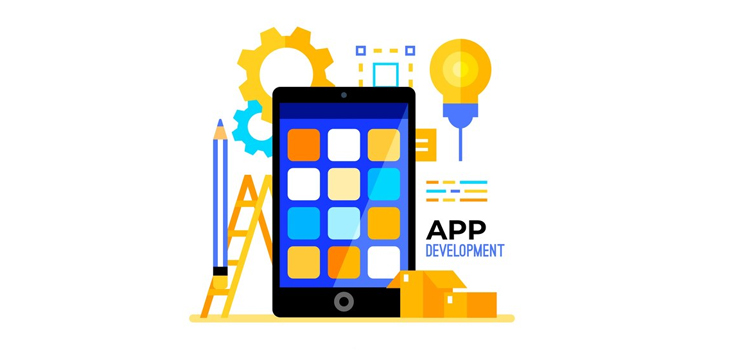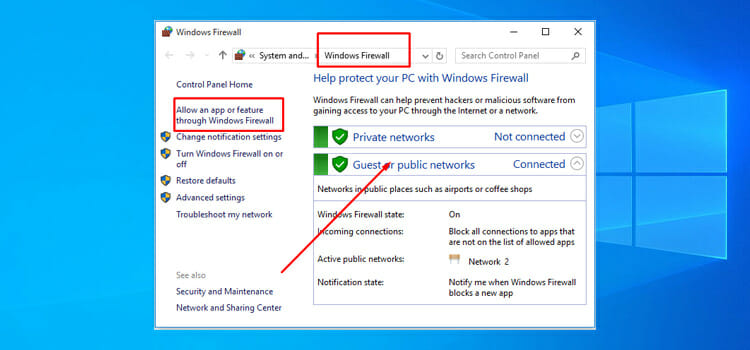Top 5 Mobile App Development Tools & Platforms
Recall the days when app development was like rocket science. Back then, you needed serious coding chops and loads of time.
Now, with tools like React Native and Flutter, we’ve achieved a technological breakthrough! These platforms are transformative forces that optimize the app creation experience.
Let’s explore together how these tools and platforms are revolutionizing app development!

The Present of Mobile App Development Tools
Mobile app development tools and platforms reflect the dynamic nature of technology and market demands.

Let’s examine the current situation in this sector:
Diversity in Platforms
The market is dominated by platforms like Android and iOS, but there’s a growing interest in cross-platform development tools. These tools allow for simultaneous development for multiple operating systems, saving time and resources.
Rise of Low-Code Solutions
There’s an increasing trend towards low-code or no-code development platforms. These user-friendly tools enable individuals without extensive programming knowledge to create apps and universalize the app development process.
Focus on UI/UX
Developers are increasingly prioritizing user interface (UI) and user experience (UX) design. Tools that offer advanced UI/UX capabilities are in high demand, as they contribute significantly to the app’s success.
Integration with Emerging Technologies
Tools are integrating capabilities like AI, machine learning, and AR/VR to provide more sophisticated app functionalities.
Top 5 Mobile App Development Tools & Platforms

Tool 1: React Native
React Native, known for enabling cross-platform app development, allows developers to build mobile apps using JavaScript and React. Its hot-reloading feature enhances productivity, and apps built with React Native are indistinguishable from native apps.
Tool 2: Flutter
Developed by Google, Flutter is a UI toolkit that helps to craft natively compiled applications for mobile, web, and desktop from a single codebase. It’s known for its fast development, expressive and flexible UI, and native performance.
Tool 3: Xamarin
A Microsoft-owned framework, Xamarin uses C# for developing apps for Android and iOS. Its main appeal is the ability to share code across platforms, reduce development time, and maintain performance similar to native apps.
Tool 4: Ionic
Ionic is a popular open-source framework used for developing mobile applications. Ionic allows for the creation of cross-platform applications. It means that it has a single codebase that can be used to build apps for both iOS and Android platforms, enhancing efficiency and reducing development time.
Tool 5: Appcelerator Titanium
Appcelerator Titanium is a cross-platform development tool that allows you to create apps for both Android and iOS devices. It uses standard web programming languages such as HTML, CSS, and JavaScript, which makes it a great choice for beginners. Another great thing about Titanium is that it offers a wide range of features, including animation, geolocation, and media playback.
5 Factors To Consider While Choosing The Right Development Tool
Selection of the right tools is not just a starting point in app development. It’s a foundational decision that impacts the entire project. The choice of the best mobile app development tools can make or break an app’s success!
Here are more factors you should consider before implementing mobile app development tools:
- Efficiency and Speed
Advanced tools streamline the development process and significantly reduce the time from conception to launch. They often come with pre-built elements and integrations that allow developers to focus on customization rather than building from scratch.
- Cross-Platform Compatibility
With the right tools, developers can create applications that are compatible across various platforms and reach a broader audience. This is especially important in a market where users are split between iOS, Android, and other operating systems.
- Advanced Features and Functionality
Modern development tools come equipped with the latest features and technologies, such as AI, AR/VR, and cloud integration. This enables the creation of more sophisticated and engaging apps.
- Cost-Effectiveness
Efficient tools can also translate into cost savings. Take into account this roadmap to hiring an app developer to speed up the development process and reduce the need for extensive coding.
- Support and Community
Established tools often have a strong support network and community that provides resources, documentation, and troubleshooting help.
5 Tips to Choose the Right Platform for Your Project
The success of your project is directly connected with the chosen platform.
Let’s explore the tips that will help to figure out which framework is the most suitable for you!
- Think About Project Requirements
Assess the specific needs of your project. For complex, feature-rich apps, opt for tools that offer extensive customization and advanced features. For simpler projects, a platform with a user-friendly interface and basic functionalities might be sufficient.
- Consider Platform Compatibility
Consider whether you need a native app (iOS/Android) or a cross-platform solution. Tools like React Native or Xamarin are excellent for cross-platform development because they offer a wider reach.
- Evaluate Budget Constraints
Your budget plays a significant role. Some high-end platforms may offer more features but at a higher cost. Weigh the benefits against the expenses.
- Assess Developer Skill Set
Choose a tool that aligns with your team’s expertise. The utilization of familiar tools can significantly speed up the development process.
- Decide on Future Scalability
Consider the scalability of the tool. As your app grows, the platform should be able to accommodate increased demands.
Mobile App Development Tools In Action: Case Studies
The impact of the right mobile app development tools can be seen in numerous success stories.
Here’s an overview of a few case studies:
Instagram with React Native
Instagram, one of the most popular social media platforms, integrated React Native into their existing native app. This allowed for quicker feature development and easier maintenance. React Native’s ability to blend seamlessly with native components was a game changer.
Google Ads with Flutter
Flutter was used to revamp the Google Ads app. This led to an intuitive and visually appealing interface that enhanced user experience significantly.
Baskin Robbins with Xamarin
Baskin Robbins used Xamarin to develop their mobile app, which resulted in a cost-effective, efficient, and robust solution. Xamarin’s ability to share code across platforms helped in faster deployment across both iOS and Android.
From the initial complexities to now, where tools like React Native and Flutter make app development accessible and efficient, we’ve seen remarkable progress. These platforms have not only simplified the process but also opened doors to innovation and creativity.
The future seems bright, with continuous advancements that promise even more user-friendly, versatile, and powerful tools. This evolution will undoubtedly keep reshaping how we develop and interact with mobile applications and steer us toward an exciting, tech-savvy horizon.
Subscribe to our newsletter
& plug into
the world of technology





